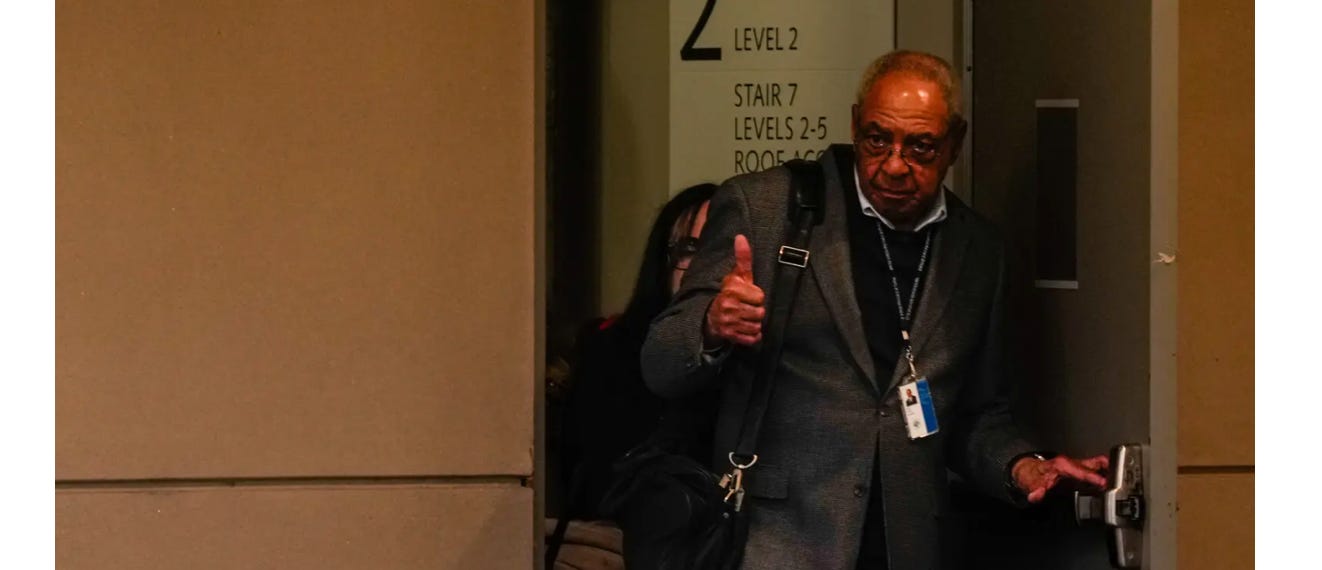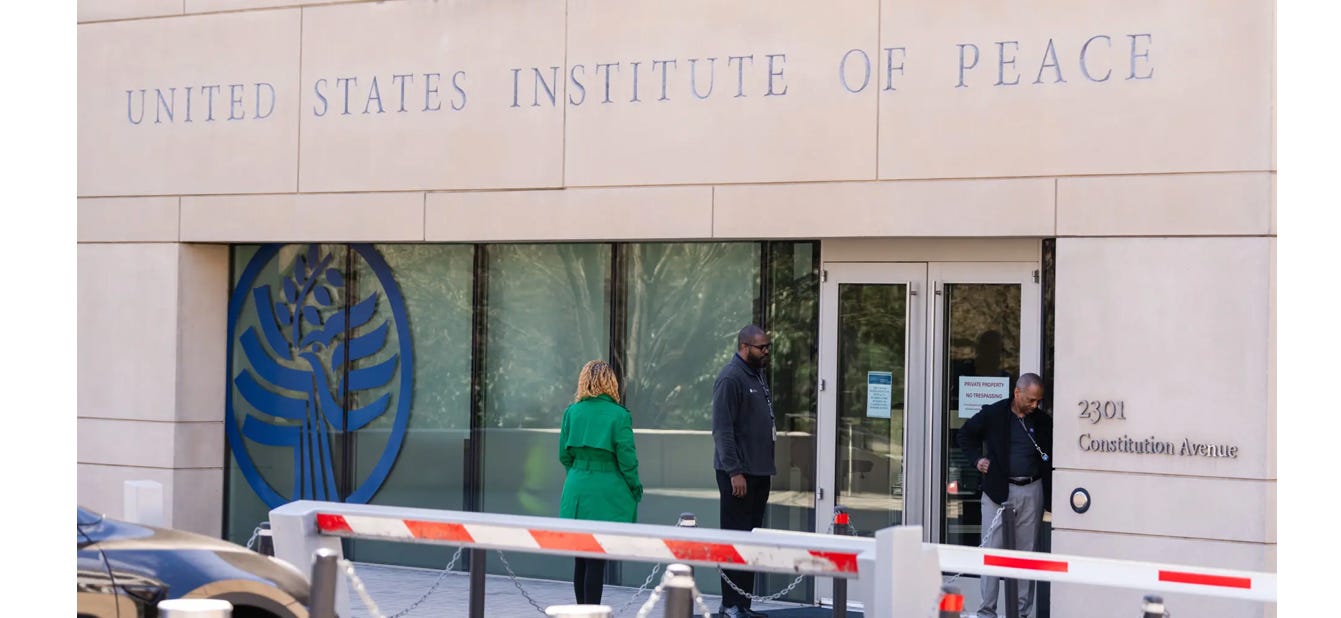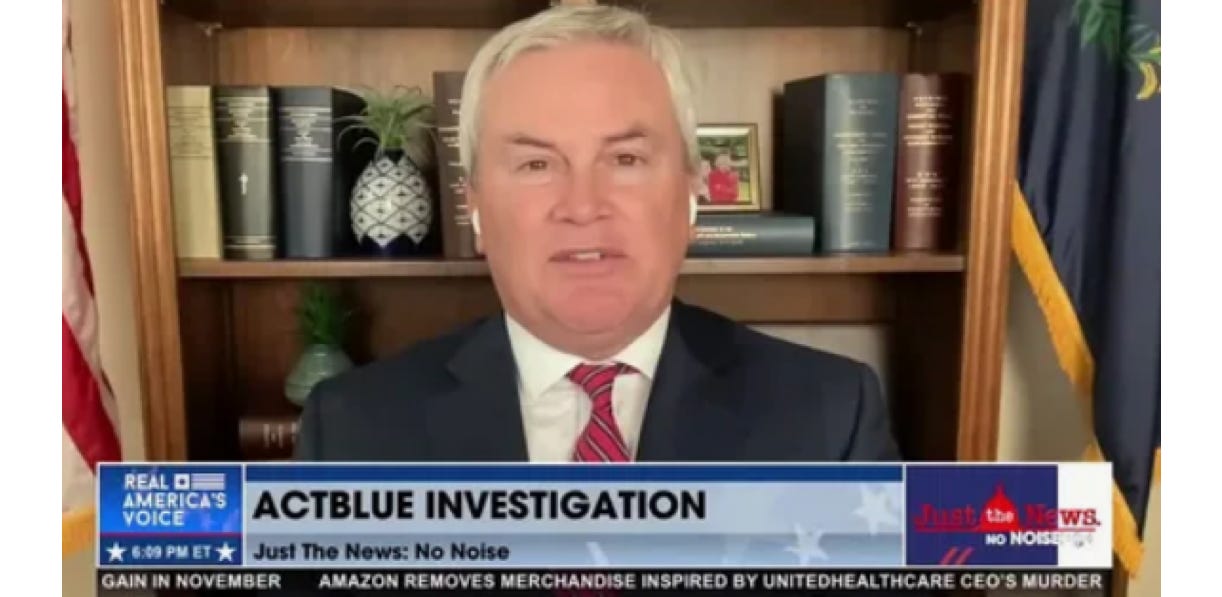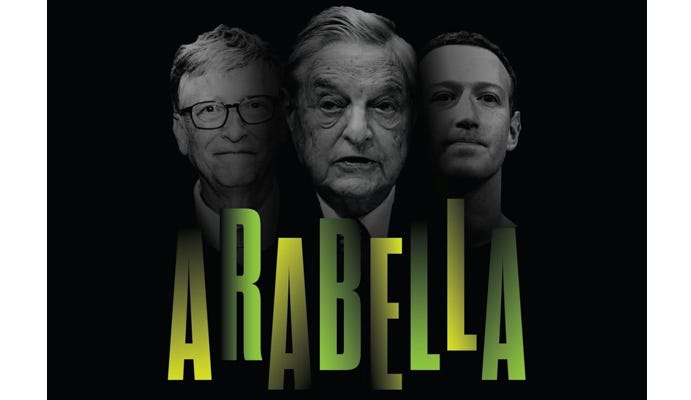Maniacs at the South Pole aside, it surely is a strange era. The New York Times ran a maniacal story yesterday under the cleverly-worded headline, “
At the U.S. Institute of Peace, It’s War When Musk’s Team Arrives.” The sub-headline explained, “A bubbling dispute broke into a dramatic standoff that ended with police involvement and the Department of Government Efficiency taking up residence at the independent agency.”
Last night, USIP’s ‘president’ George ‘the’ Moose, pictured above, was escorted out of the building by sheriff’s deputies, ending a weeklong standoff where he’d refused to voluntarily decamp from his bureaucratic throne. Lawyers for the agency that you never heard of — the latest Cold War relic — argued that DOGE had no authority, since it was quasi-independent from the Executive Branch, partly private, and partly owned by the Legislative Branch, which cannot own or operate any agencies.
USIP was initially formed by the Reagan Administration in 1984, at the height of Cold War tensions. It’s ostensibly a ‘think tank,’ with a stated mission of “promoting peace and conflict resolution,’ but its critics claim the secretive agency is just another ‘soft power’ tool the State Department uses to conduct dirty tricks and destabilize democratic governments around the globe.
You decide.
Antarctic madness unfolds; DOGE exposes magic money printers; gold surges; a ‘peace’ think tank declares war (and loses); Trump’s DEI ban survives a lefty court challenge; and much more.

www.coffeeandcovid.com
The US Institute of Peace: A Rogue Agency Defying Presidential Authority
The United States Institute of Peace (USIP) is yet another example of an unaccountable, so-called independent agency created by Congress, a legislative Frankenstein that has evolved beyond its intended function. The very idea that there exist taxpayer-funded institutions dictating foreign policy outside the control of the elected President is nothing short of absurd. This latest confrontation between the Trump administration and the USIP reveals the deep structural flaws of the modern administrative state. If the President of the United States does not control an agency engaged in global regime-building, then who does? The answer to that question is as unsettling as it is opaque.
For decades, the USIP has operated under the veneer of bipartisan consensus, quietly steering foreign policy initiatives with little public scrutiny. It claims a mandate for peace, but in reality, it plays a pivotal role in deciding which foreign governments are deemed acceptable and which must be destabilized. Who sets these policies? Who ensures accountability? Congress may have formed this entity, but few legislators even know how it operates, let alone exercise any real oversight. This is an affront to the Constitution’s separation of powers. The idea that the legislative branch should have its own de facto foreign policy operation, separate from and untouchable by the Executive, is beyond reason. Worse, this organization has a well-documented history of producing and distributing manuals designed to teach activists how to subvert and overthrow governments. Some of these same materials surfaced during the Occupy Wall Street movement, the BLM/Antifa riots, and the recent pro-Palestinian campus takeovers. The American taxpayer is footing the bill for an organization that actively undermines both U.S. interests abroad and domestic stability at home.
Democrats, predictably, will argue that USIP was designed to function outside presidential control—that it was meant to be an independent entity promoting global peace. But let’s be clear: no part of the federal government should be operating as a rogue state-within-a-state. There is no justification for a government-funded body engaging in foreign influence campaigns and tactical subversion without direct oversight from the duly elected head of the Executive Branch. This ongoing conflict between the Trump administration and the USIP presents a critical test case for the Supreme Court in addressing the unchecked proliferation of independent agencies. The Court must decide whether Congress has the authority to create organizations that function independently of presidential authority in matters of international relations.
The recent confrontation between the Trump administration and USIP brings these constitutional questions into sharp focus. On Friday, three federal employees arrived at USIP headquarters in Washington, DC—a building that, despite USIP’s relatively modest scale, was constructed at a staggering cost of $186 million. Two of these employees were affiliated with the State Department, previously assigned to USAID, and the third was from the Department of Government Efficiency (DOGE), headed by Elon Musk. Their objective was straightforward: assert rightful government oversight over a federally funded institution. However, upon arrival, these federal agents were denied entry by USIP’s private security force. The very presence of a privately contracted security team guarding what is ostensibly a U.S. government facility raised immediate concerns within the State and Defense Departments. Why does a government-funded entity require private armed security to prevent access to government officials? What exactly is being protected?
Following this brazen act of defiance, the Trump administration acted decisively. Later that same day, the White House fired eleven members of the USIP board for failing to comply with an executive order aimed at restoring federal oversight. This left only three remaining board members: Secretary of State Marco Rubio, Secretary of Defense Pete Hegseth, and Peter Garvin, President of the National Defense University. These three officials wasted no time, swiftly passing a resolution to remove George R. Moose as President of USIP, replacing him with Kenneth Jackson as acting president.
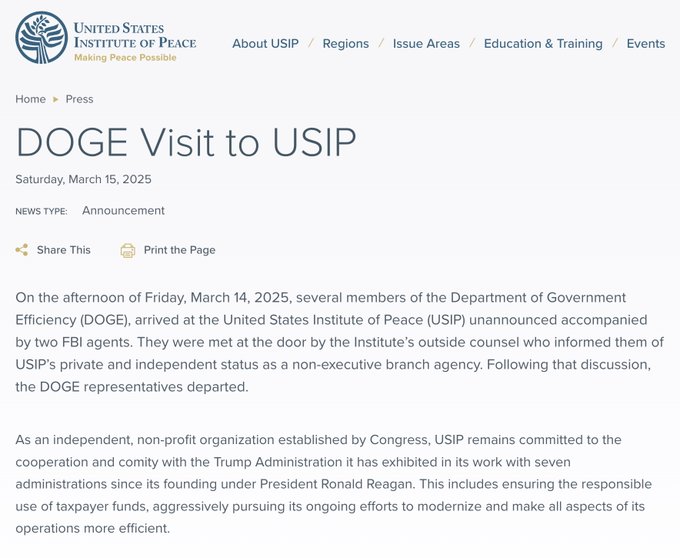
Armed with this board resolution and accompanied by FBI agents, the federal employees returned to the USIP building, believing their authority was now firmly established. But George R. Moose refused to comply. Instead, he escalated the situation by calling in the DC Police, leading to an extraordinary standoff. Here was a federal agency, funded by taxpayer dollars, refusing to recognize a legally mandated change in leadership, using local law enforcement as a shield against federal authority. The impasse forced the federal employees to retreat once again.
By Monday, tensions had only escalated. When the federal employees and FBI agents returned, they found the locks on the USIP building had been changed over the weekend. Once again, Moose and his private security force called the DC Police. This time, however, after reviewing the official documentation, DC law enforcement sided with the Trump administration’s federal employees. Realizing he had lost control, Moose finally agreed to step aside. But even as he relented, USIP’s private security team refused to comply. In a final act of defiance, they physically barred federal employees from entering the premises. This forced Moose to terminate their contract on the spot, only then allowing the rightful authorities access to the building.
As of Tuesday, the federal employees overseeing the transition remain on high alert. They fear for their safety and that of their families. At least two expect to be doxxed by drive-by media outlets eager to paint them as villains in this saga. Meanwhile, Moose has already begun coordinating with high-powered Democratic law firms to mount a legal challenge against the Trump administration’s intervention. It is only a matter of time before a Democrat-appointed judge issues an injunction, delaying the elimination of the USIP’s culture of unaccountability.
Initial reports emerging from within the USIP building suggest something deeply unsettling is underway. Amidst the unsettling silence, there is an unmistakable air of concern—bordering on fear—among the small investigative team of three federal employees. Though tight-lipped about the specifics, their demeanor makes clear they recognize they've ventured into dangerous territory, potentially encroaching upon interests fiercely guarded by powerful figures, most notably within the intelligence community.
What began as scrutiny into bureaucratic excess appears to have uncovered something far more sinister. The USIP, despite its modest workforce of roughly 300, consumes over $55 million annually in taxpayer funds, secretly supplemented by tens of millions from USAID and other governmental sources earmarked for particular projects. The lavishness of the facility contrasts starkly with its modest scale, raising troubling questions about accountability and oversight. This isolated and opaque institution, steered by unelected bureaucrats, seemingly operates beyond the reach of standard governance, fueling concerns about what precisely lies beneath its polished veneer.
This battle is more than a bureaucratic squabble. It is a direct challenge to the constitutional balance of powers. The Executive Branch, led by the President, is entrusted with the responsibility of conducting foreign policy. Congress may fund and provide oversight, but it cannot establish a parallel foreign policy apparatus that functions outside of presidential authority. The USIP controversy is emblematic of the deeper rot within the administrative state—an unelected fourth branch of government that operates beyond the reach of the people. The Supreme Court must weigh in. If the USIP is allowed to stand as an independent fiefdom, it will set a precedent for the unchecked expansion of other so-called independent agencies. The consequences for American governance would be dire.
The standoff at USIP is not just about a single agency. It is about the fundamental question of who governs. Is it the elected President of the United States, or is it a cabal of entrenched bureaucrats, accountable to no one? The answer to that question will determine the future of executive authority and the balance of power in the federal government.
https://x.com/amuse/article/1902062304465764572/media/1902062248379740163




